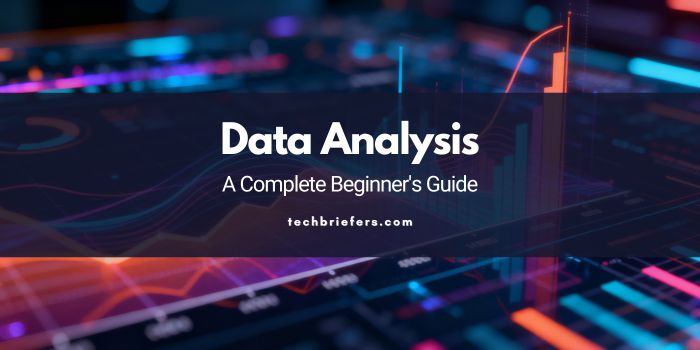What Is Data Analysis? A Complete Beginner’s Guide

When you hear the term “data analysis,” you might imagine huge spreadsheets, charts, or complex tools. But at its core, data analysis is simply the process of making sense of information. As an analyst or a learner, you and I use data analysis every day—whether we’re comparing product prices, checking monthly expenses, or identifying trends at work.
In professional settings, data analysis helps businesses understand what’s happening, why it’s happening, and what to do next. The goal is always the same: use data to make better decisions.
Why Data Analysis Matters
You and I make choices based on information. Businesses do the same, but at a much larger scale. Data analysis helps companies improve performance, identify new opportunities, and solve problems faster.
When you learn data analysis, you gain the ability to:
- Understand trends
- Explain business events
- Predict what may happen next
- Support decisions with evidence
This skill is valuable in almost every industry.
Key Objectives of Data Analysis
Whenever I begin a data analysis task, I focus on a few main objectives. These include:
- Finding patterns in data
- Understanding relationships
- Supporting decision-making
- Improving performance
- Forecasting outcomes
As you learn more, you’ll notice that these objectives guide most of your work as an analyst.
Types of Data Analysis
Descriptive Analysis
This tells you what happened. You might summarize sales, count users, or create a chart to view patterns.
Diagnostic Analysis
Here, you look deeper to understand why something happened. You compare data, identify correlations, and search for root causes.
Predictive Analysis
This type uses past data to predict what’s likely to happen next. It could be forecasting sales or estimating customer demand.
Prescriptive Analysis
This goes a step further and helps you decide what actions to take. You evaluate multiple scenarios and choose the most effective option.
The Data Analysis Process
Data Collection
First, you gather information from databases, surveys, reports, or tools. The quality of your insights depends heavily on the quality of your data.
Data Cleaning
In this step, you fix errors, remove duplicates, handle missing values, and standardize formats. As you start working with real data, you’ll see that cleaning often takes the most time.
Data Exploration
Once your data is ready, you explore it. You and I use summary statistics, charts, or simple calculations to understand what the data is saying.
Data Analysis
This is where you apply techniques—such as comparisons, correlations, or modeling—to uncover insights and answer specific questions.
Reporting and Presentation
Finally, you share your findings through reports, dashboards, or presentations. The goal is to communicate insights clearly so others can take action.
Tools Used in Data Analysis
As you move forward, you’ll find that different tools help you at different stages. Some of the most common include:
- Excel for quick calculations and pivot tables
- SQL for working with databases
- Python (Pandas and NumPy) for deeper analysis
- Power BI and Tableau for building dashboards
You don’t need to learn everything at once. Start simple and expand your skills over time.
Skills You Need for Data Analysis
To become effective at data analysis, you need a mix of technical and analytical skills. Some of the most important are:
- Logical thinking
- Basic statistics
- Spreadsheet or SQL knowledge
- Visualization skills
- Clear communication
These skills allow you to turn raw data into meaningful insights.
Real-World Examples of Data Analysis
You’ll find data analysis being used everywhere:
- Retail companies study buying patterns to stock products better
- Hospitals analyze patient data to improve care
- Banks detect suspicious activity by analyzing transactions
- Marketing teams measure campaign performance to increase ROI
As you build experience, you’ll start recognizing how data analysis supports decisions in different industries.
Conclusion
Data analysis is a powerful skill that helps you understand information, solve problems, and communicate insights clearly. Whether you’re just starting or exploring analytics as a career, learning how to analyze data opens the door to new opportunities and smarter decision-making.

Leave a Reply